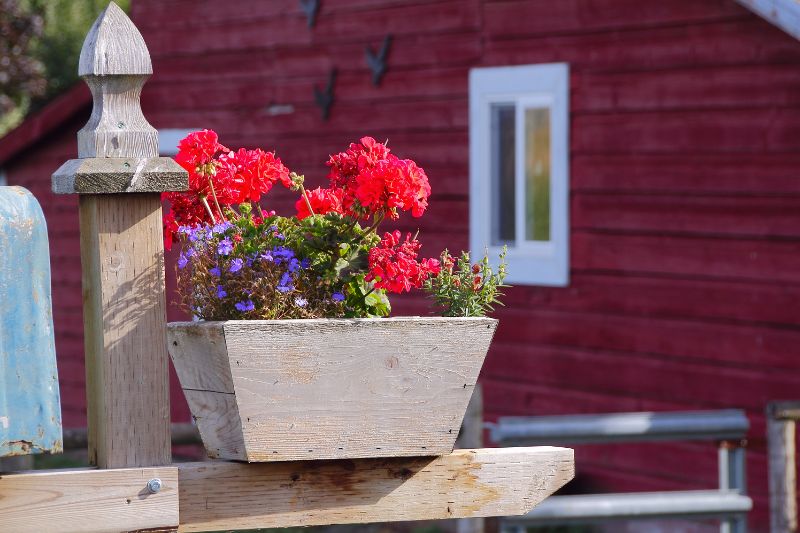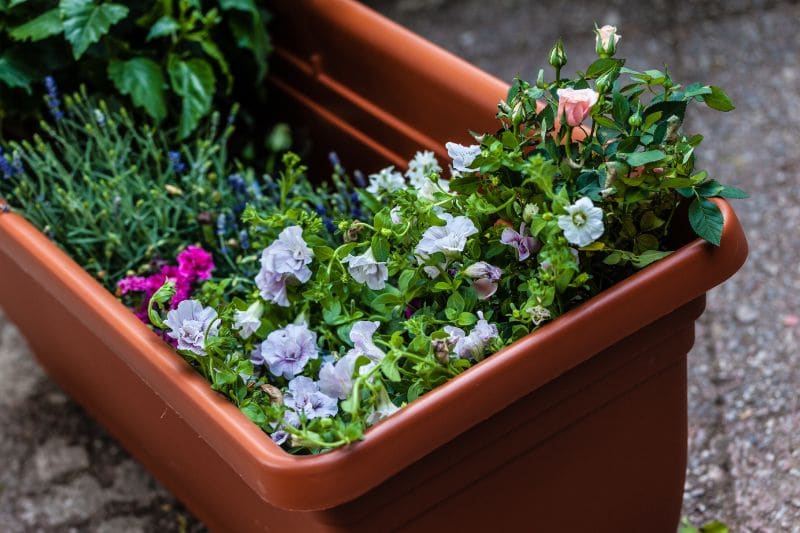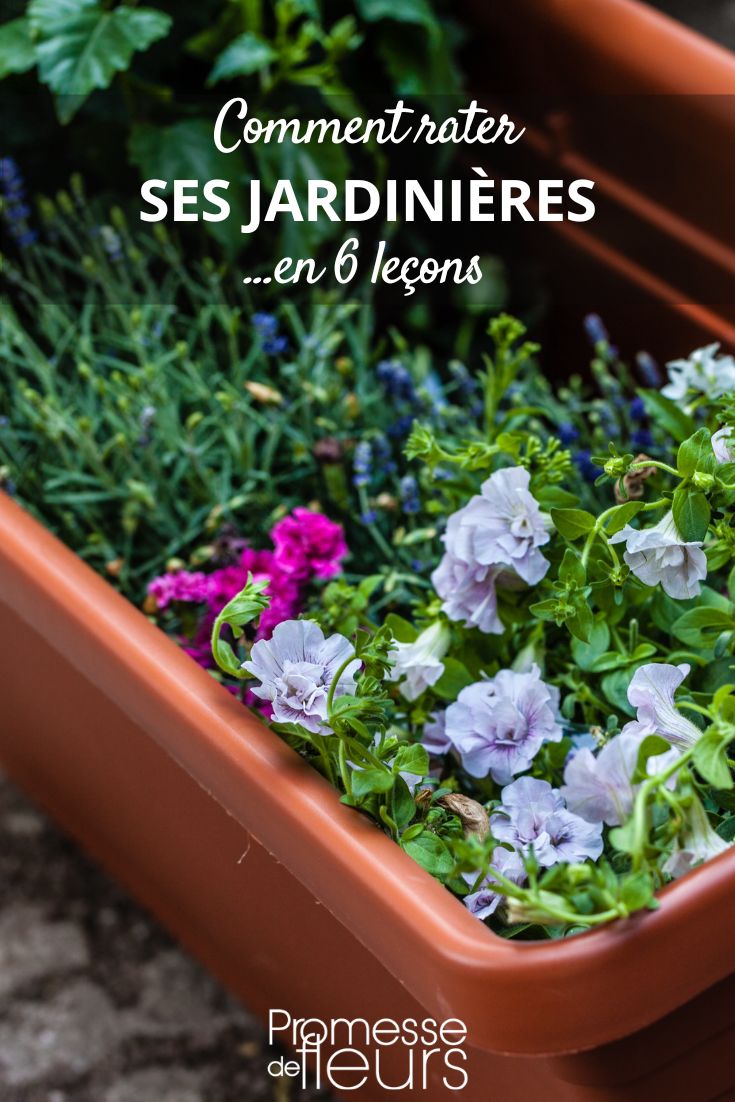Do you dream of a planter that would send shivers down the spines of gardening enthusiasts? You’ve come to the right place! We’re going to reveal the foolproof secrets, with a touch of humour, to transform your planter into a true botanical disaster. Unless, of course, you want to do the opposite and learn what not to do? Follow our six essential lessons to ensure you fail spectacularly with your planter.
Lesson 1: Mixing Shade and Sun Plants
To kick off your masterpiece of a failed planter, nothing is simpler than to cheerfully mix sun-loving plants with those that prefer shade. Imagine an unlikely marriage between an elegant Hosta, which loves to bask in the shade, and a flamboyant Geranium, a sun worshipper. Well, that’s the perfect recipe for a botanical fiasco!
If you place them all in the sun, the Hosta, deprived of its beloved shade, will see its leaves burn and wilt quickly. Conversely, in the shade, the Geranium, starved of light, will become weak and stop flowering. A combination doomed to fail from the start, but so amusing to watch to see how far it can go.
If you’re really determined to ruin your planter, why not add a semi-shade plant to the mix? A Heuchera, for example, which prefers dappled light but can tolerate a bit of sun. The confusion will be total, and your plants will be at war for the best spot where only one will truly thrive.

Lesson 2: Ignoring Plants' Water Needs
To continue your masterpiece of a failed planter, nothing is simpler than ignoring the water needs of your plants. Make sure not to choose plants with similar watering requirements. Instead, pair plants that love dry soil, like a cactus, with water-hungry plants, like an impatiens.
Then, you’ll have to juggle the watering! The cactus, drowned by excess water, will start to rot joyfully, while the impatiens, lacking moisture, will wilt sadly. It’s the perfect recipe for a horticultural disaster!
If you’re really determined to ruin your planter, why not add a plant that needs even more water, like a papyrus? The cactus and the impatiens won’t know where to turn, each trying to survive in an unsuitable environment. The chaos will be total, and your planter will be a fascinating spectacle of distressed plants.
Lesson 3: Mixing Colours
To add a touch of originality to your failed planter, joyfully mix colours that clash with each other. Imagine a bold marriage of bright red and garish yellow or fluorescent green. Nothing like it to create a true visual festival… of bad taste! Above all, don’t choose similar colours to create a lovely gradient, nor complementary colours that work well together.
The result will be a plant patchwork where each colour seems to fight for attention, making your planter as harmonious as a Picasso painting on acid. The puzzled looks and amused smiles from your neighbours will be your reward.
To perfect this colourful cacophony, why not add pastel flowers that will be completely overshadowed by the garish colours of the other plants? The confusion will be total!

Lesson 4: Mixing Large and Small Plants
For an even more disastrous planter, mix plants of completely different sizes without hesitation. Place a bush, even a dwarf one, or a large perennial next to tiny plants. You’ll create an unbalanced composition where the small plants will be crushed by the grandeur of their neighbours. A true success… in terms of chaos!
Imagine, for example, tiny pansies desperately trying to catch a ray of sunshine, smothered by the imposing shadow of a Mexican orange blossom (Choisya). Their growth will be quickly stunted, their flowers less abundant, or even non-existent. Meanwhile, the orange blossom will thrive, spreading its branches and flowers without any consideration for its little companions.
To add to this confusion, why not introduce a climbing plant, like a clematis or ivy? It will wrap around the bush, seeking to climb ever higher. The result will be a planter where each plant will fight for its living space, creating a fascinating spectacle of plant competition.
Lesson 5: Forgetting Soil Compatibility
To perfect your failed planter, ignore the specific soil needs of your plants. For example, joyfully plant lavenders, which love well-drained, calcareous soils, with hostas that prefer rich, moist, even heavy and slightly acidic soils. Nothing like it to create an unsuitable environment for all your plants!
The lavender, lacking drainage and dry soil, will suffer in overly moist conditions, risking root rot. On the other hand, the hosta, craving moisture, will wither in dry, poor, calcareous soil, its foliage quickly yellowing and wilting. It’s the perfect recipe for a distressed planter!
For added chaos, mix acid-loving plants with those that prefer calcareous soils, a true nightmare for them! Your plants will compete for contradictory soil conditions, ensuring a total failure of the planter.

Lesson 6: Placing Trailing Plants at the Back of the Planter
To complete your masterpiece of a failed planter, place trailing plants at the back. Nothing like it to create a completely unbalanced and unsightly composition. Imagine a planter where trailing petunias are hidden behind taller plants like heucheras, sages, or lobelias.
Trailing plants, which are meant to cascade elegantly over the front of the planter, will be invisible, their beauty masked by the taller plants. The plants at the front, with their delicate flowers and rapid growth, will become entangled and compressed, unable to showcase their charm either.

































Comments